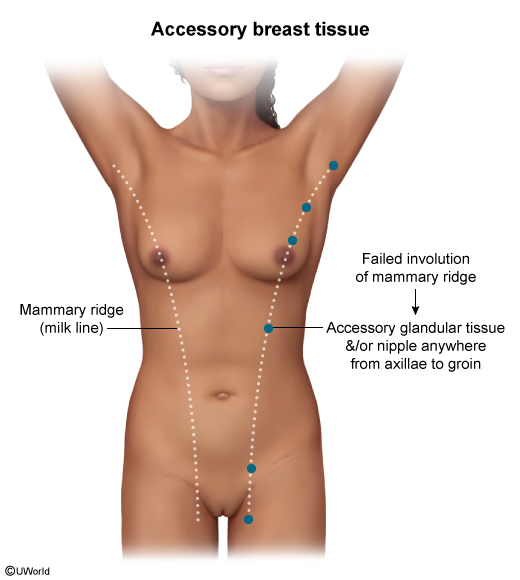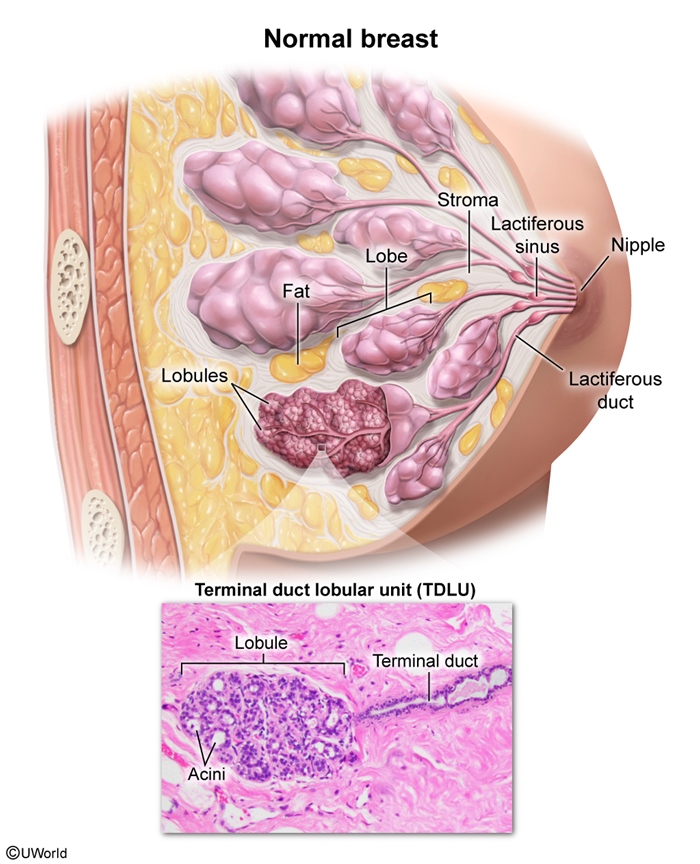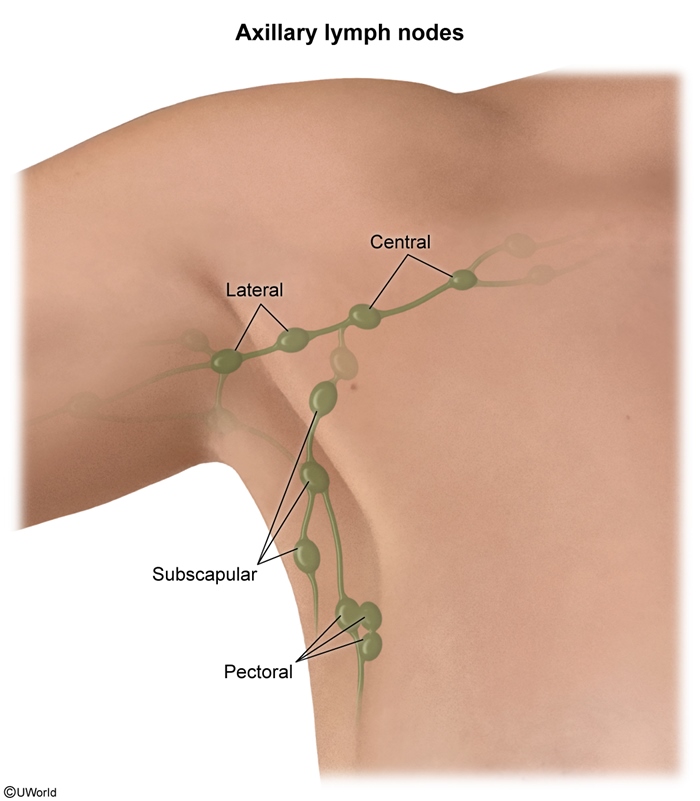Breast Anatomy And Histology
Article Sections
Introduction
A comprehensive understanding of breast anatomy is required for clinical practice, especially in the fields of surgery, oncology, and radiology. The breast is a dynamic organ involved in lactation and hormonal responses.
Breast development
In utero, the breasts develop from the mammary ridge (milk line), an ectodermal thickening that initially extends bilaterally from the axillae to the medial thighs; the remainder of the ridge subsequently regresses in early gestation.
Occasionally, incomplete involution of the mammary ridge results in the formation of an accessory nipple (sometimes with associated glandular tissue) anywhere along this ridge (Figure 1). The most common location of an accessory nipple is inferior to the breast. Accessory nipples are usually asymptomatic, well-circumscribed, hyperpigmented papules that may become larger during puberty, before menses, or with pregnancy/lactation due to rising estrogen and progesterone levels (similar to physiologic changes in normal breast tissue). Associated glandular tissue may also become tender or swollen.
Continue Learning with UWorld
Get the full Breast Anatomy And Histology article plus rich visuals, real-world cases, and in-depth insights from medical experts, all available through the UWorld Medical Library.
Figures


